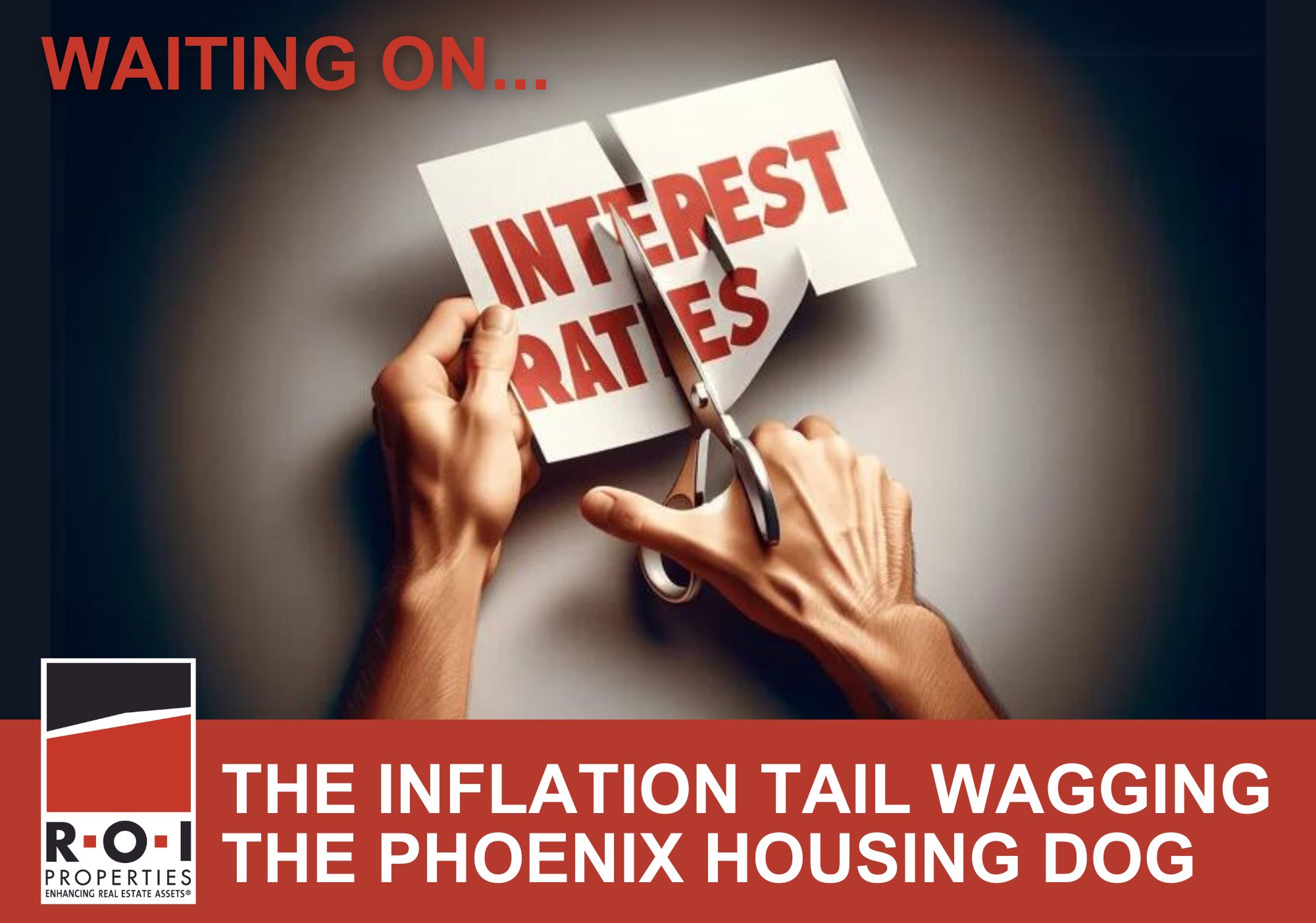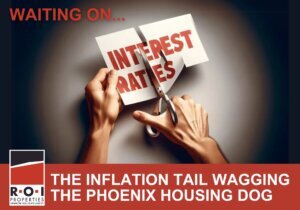Much like the rest of the country, the residential housing market in Greater Phoenix is focused on where interest rates are headed. For the foreseeable future, it appears that inflation will be the tail wagging the Phoenix housing dog.
In their May meeting, Federal Reserve officials remained concerned about persistently high levels of inflation in an economy that’s chugging along—with monthly data indicating goods and services prices are increasing at a pace well above the Fed’s 2% target. The result? The benchmark rate remains at a 23-year high—and the expectations from last year of multiple rate decreases now seem overly optimistic. The next Fed meeting occurs on June 12, and then they meet again on July 31.
Until we experience a rate cut, you can plan on staying in our now-familiar pattern. Single family owners are locked into their current mortgages and properties, and buyers who need to buy will figure out a way to do so. The $2M-plus range is still seeing an astonishing number of all-cash transactions. Even with small increases in inventory, Phoenix remains short on the supply of homes, which is keeping pricing fairly steady.
In many cases, deals require some level of creativity. When available, assumable loans are playing an interesting role in the market, since they may be far below current rates. One of our recent listings, for example, had an assumable VA loan at a rate of 2.25% on a $1.6 million property—which would be close to $5,000 monthly payments at today’s 7% rates. Of course, a VA loan has strict requirements: The owner of a VA property would lose their eligibility to get a VA loan on their next property if they sold to a non-veteran buyer. In any case the dramatic difference between rates illustrates how powerful assumption is within the single-family residential space, along with other creative solutions such as seller carryback financing and wraparound mortgages.
Phoenix Housing Market Overview
The Phoenix market’s current low levels of transactions make it tricky to extrapolate statistics, particularly in less populated areas of the Valley. With relatively few data points to draw on, each sale, purchase, or new listing may have an outsized effect on the metrics.
That said, for the third time in two years, the Greater Phoenix housing market has shifted into balance. April to May 2024, the supply-demand index dropped from 111.1 to 108.7, with supply up and demand essentially flat. The most affected properties in this type of market are the fixer-uppers: homes with extensive wear and tear, deferred maintenance, or in outdated condition. In Q1 2022, the market was so hot that these homes would fly off the market with little to no effort by the seller. By 2023 the market had cooled, so these homes would still sell, but their owners would take hits on price, repairs, and concessions to the buyer. As of May 2024, buyers had gained the advantage as supply continues to rise. Fixer-uppers should be priced to sell to investors, or have all necessary repairs and updates done prior to being listed—not to achieve a higher price but just to sell at all.
Some of the key Phoenix housing market statistics we’re watching as we head into summer:
- Supply is up 48% over this time last year and continues to rise.
- With 41,207 total new listings year-to-date, we are up 16.6% over last year—but that is still the second lowest count historically going back to 2001 (behind only 2023).
- Total sales year-to-date are down 4.3% from last year and this May was 13.8% lower than last May.
- The luxury market over $1.5M has outperformed, with the best April and May ever for sales volume: up 30% over last year and up 3% over the previous high of 2021.
Learn More About Our Full-Service Brokerage Firm
Contact Us











